
 |
||||||||
|
|
||||||||
 Feeling in Time Feeling in TimeBy John Clements
There is an important concept that I see as fantastically well-expressed in the Germanic martial arts teachings. I am always stressing it in my lessons and classes. It is the simple idea that you have got to learn how to gauge pressure and sense leverage; that this only occurs when in contact, and that a sense of timing is an intrinsic and critical component of this. 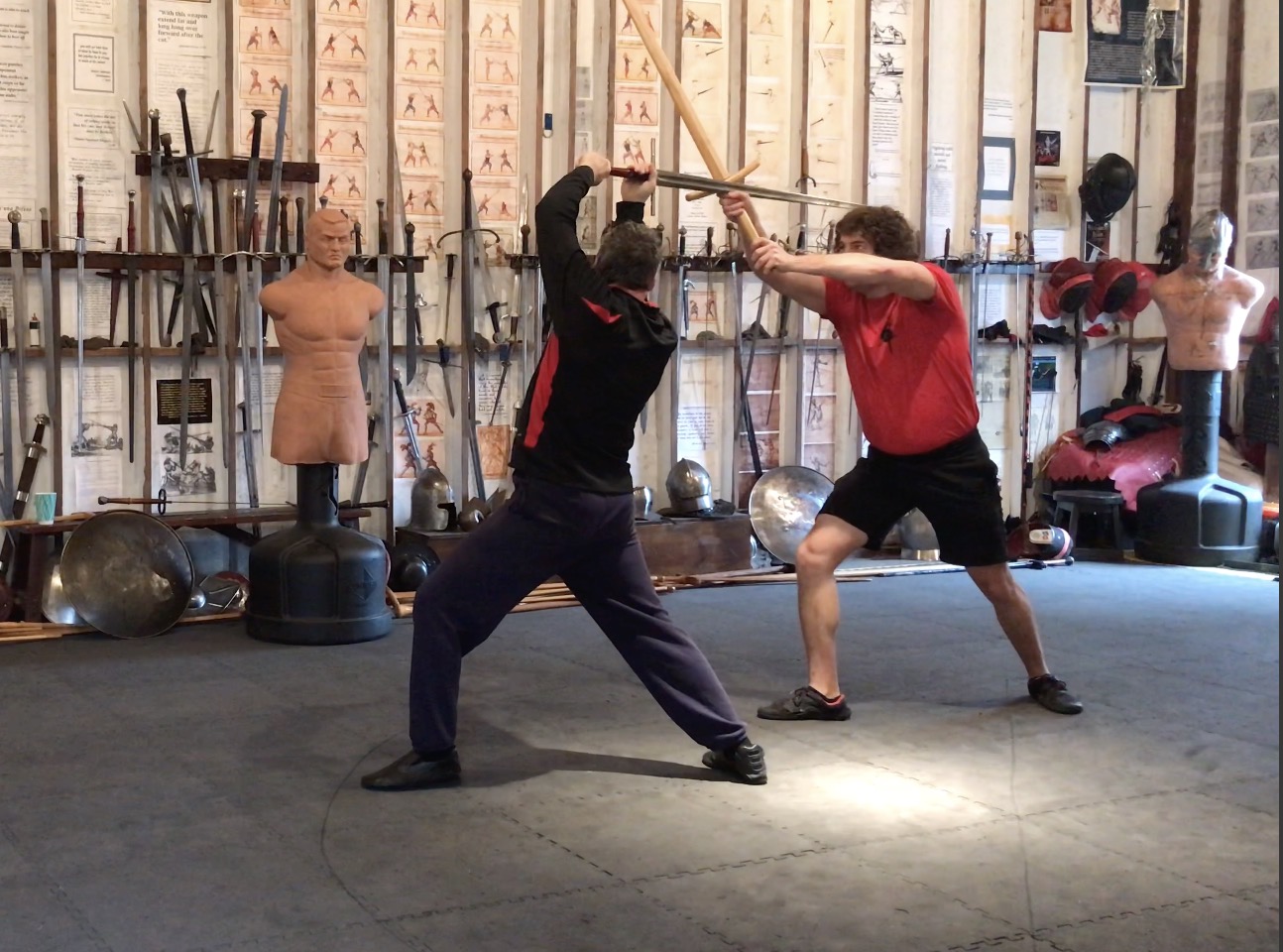 Peter Von Danzig in the mid-15th century expressed it best when he wrote, “Fuehlen and Indes are one and the same and indeed cannot be one without the other.” Those who fail to understand that Indes
means acting in the instant —and not before or after, nor is it about
acting simultaneously— completely miss this crucial aspect of the craft.
You act instantly upon judging the resistance of contact whether you
strike or counter-strike. Peter Von Danzig in the mid-15th century expressed it best when he wrote, “Fuehlen and Indes are one and the same and indeed cannot be one without the other.” Those who fail to understand that Indes
means acting in the instant —and not before or after, nor is it about
acting simultaneously— completely miss this crucial aspect of the craft.
You act instantly upon judging the resistance of contact whether you
strike or counter-strike. This is why Master Liechtenauer tells us that you must “learn to feel” and you will truly be a master, as well as telling us to remember this word Indes, as so much of the Art depends upon it. (This is also precisely why our Armatura’s "press" or "feeling drill" is one of the fundamental aspects of our training program —and why I have little patience for those who don’t place proper emphasis on it.) I have long demonstrated this vital idea of the link between contact sensitivity and tempo by showing how when I hold my weapon out and try to "feel" without contact I detect nothing. Then, when I hold my weapon against my opponent’s after he has already struck at me I again feel nothing ...because his freaking weapon is stuck inside me and it’s too late. 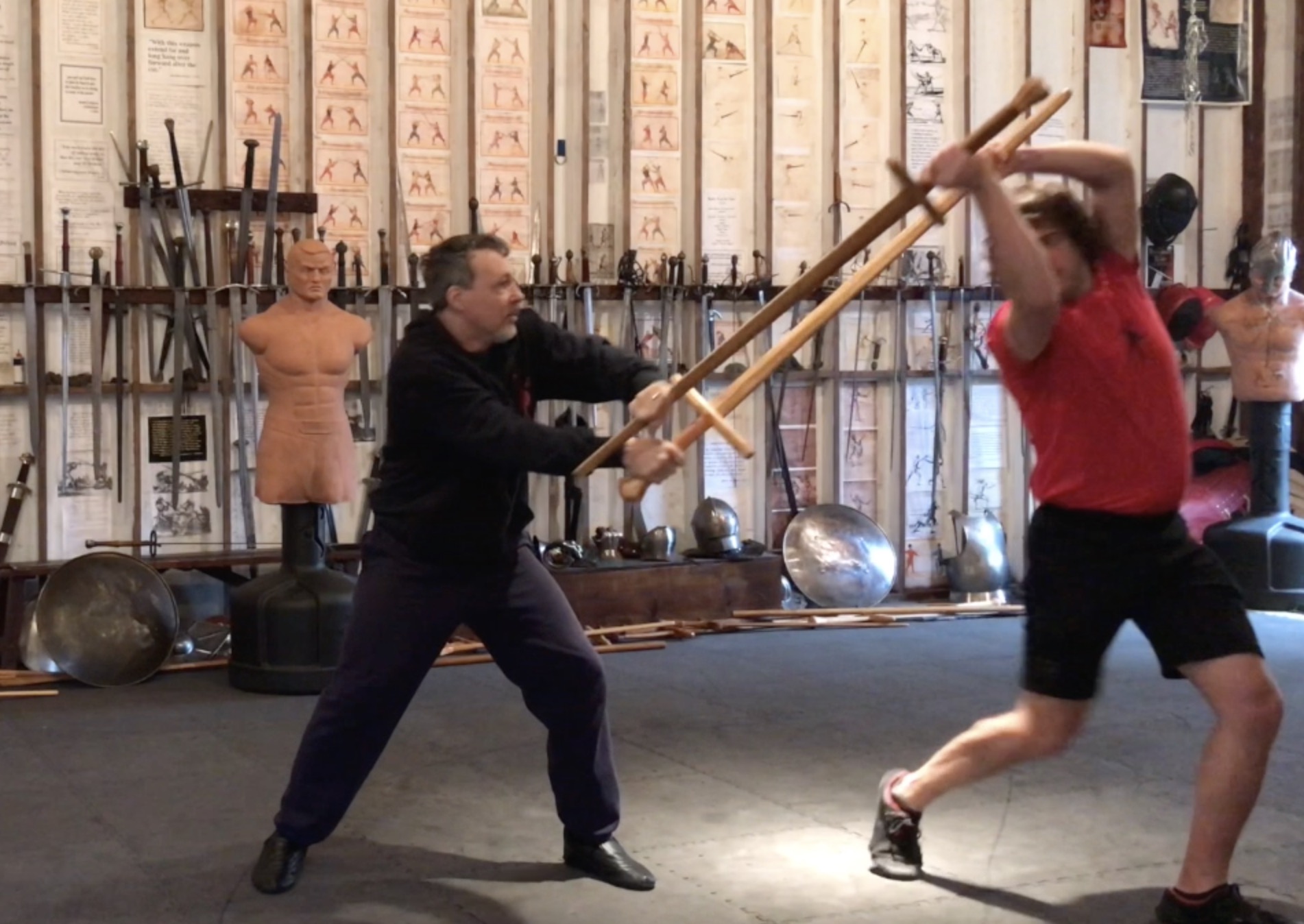 Thus, it’s only in the instant that he strikes that I can feel whether
he is strong or weak on the sword by my act of coming to a crossing, or
hanging, so that I am intercepting, impeding, and binding on it. From
there, in that very briefest of moments that I feel whether his contact
is stronger or weaker in that instant, I instantly go harder or softer
myself in order to wind around or strike off of his weapon. This is the
very “striking after” that we are told to deliberately seek. It’s that
simple. And this is also where the whole idea of the "first strike" and
"second strike" comes in as Master Liechtenauer explains. Thus, it’s only in the instant that he strikes that I can feel whether
he is strong or weak on the sword by my act of coming to a crossing, or
hanging, so that I am intercepting, impeding, and binding on it. From
there, in that very briefest of moments that I feel whether his contact
is stronger or weaker in that instant, I instantly go harder or softer
myself in order to wind around or strike off of his weapon. This is the
very “striking after” that we are told to deliberately seek. It’s that
simple. And this is also where the whole idea of the "first strike" and
"second strike" comes in as Master Liechtenauer explains. There is a tremendous amount of perceptive judgment required to achieve this: judgement of the range, judgement of the hard and soft contact pressure, and judgement of the given angles and postures of weapons and bodies both. Even the size, strength, reach and balance of the opponent is considered. Most of all, it requires prudent judgement of when to act in the middle of their attempt to act in the middle of your own action (!). That’s a great deal of constant judgment. 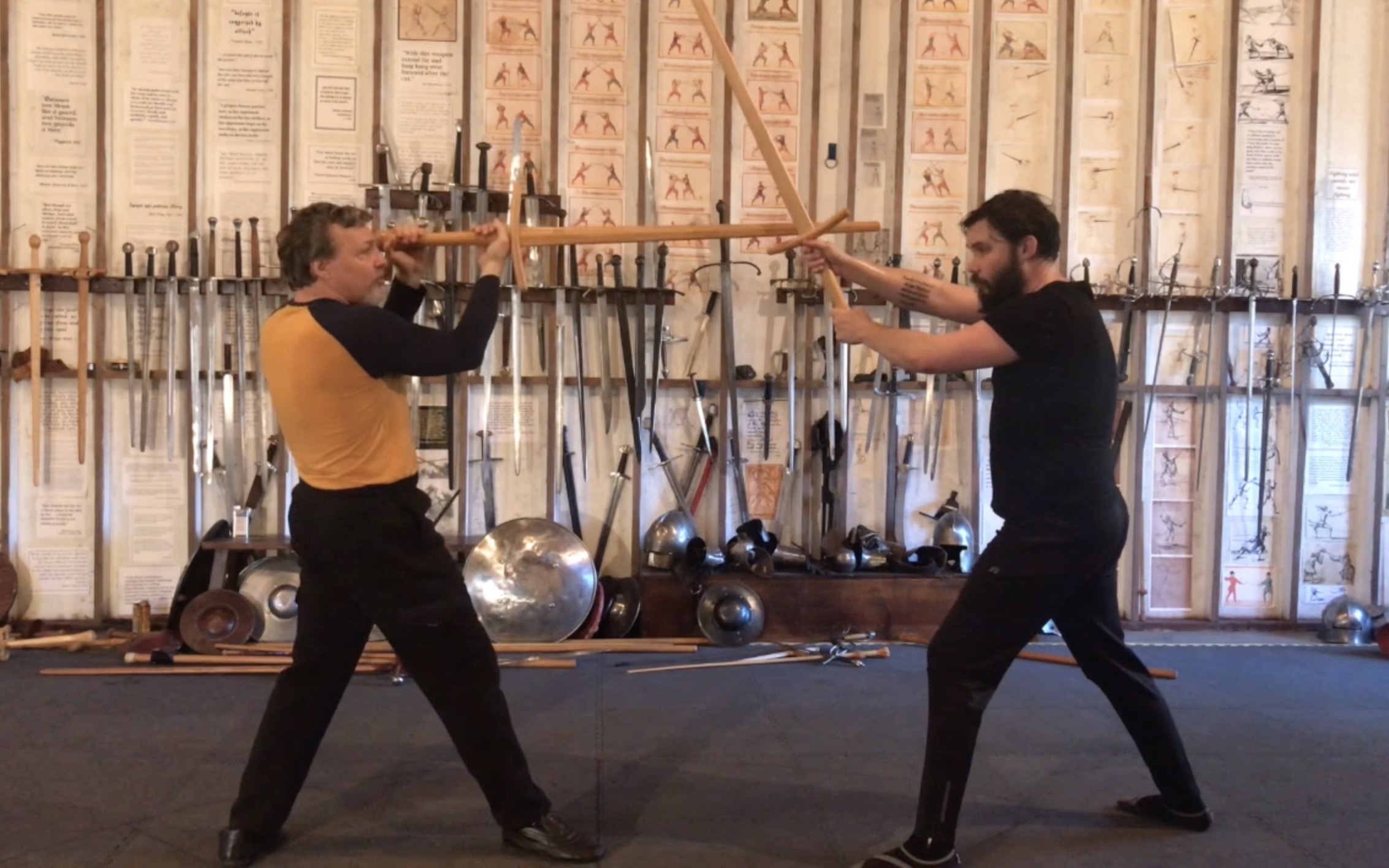 The easiest way to understand this is to visualize (or better still,
experiment in person) closing within range and simply trying to slowly
press your sword edge directly against your opponent’s face. When, by
necessity, they lift their weapon to guard against it the two blades
will connect with pressure. In this rudimentary crossing it is
self-evident that the opponent cannot suddenly remove their blade from
their position without your blade instantly going forward into them. In
other words, they can neither cease resisting nor pull their weapon away
from yours without getting hit. The two weapons are thus bound together
at an impasse. But, if you suddenly release the pressure, either by
stopping or reversing the force of your effort, the opponent can feel
this. They can sense instantly how they can now move their weapon safely
off of yours to strike at you without risk of injury in turn. In this
manner, knowing when it’s time or not to act is directly —and
inseparably— linked to sensing the force of contact. In actual combat,
this violent dynamic occurs with each fighter striving to instantly feel
when they’ve gotten in place to suddenly strike around the resistance
of the contact or else execute some action off it. The simplest way to
express this is: you cannot feel without timing and you cannot time
without feeling. The easiest way to understand this is to visualize (or better still,
experiment in person) closing within range and simply trying to slowly
press your sword edge directly against your opponent’s face. When, by
necessity, they lift their weapon to guard against it the two blades
will connect with pressure. In this rudimentary crossing it is
self-evident that the opponent cannot suddenly remove their blade from
their position without your blade instantly going forward into them. In
other words, they can neither cease resisting nor pull their weapon away
from yours without getting hit. The two weapons are thus bound together
at an impasse. But, if you suddenly release the pressure, either by
stopping or reversing the force of your effort, the opponent can feel
this. They can sense instantly how they can now move their weapon safely
off of yours to strike at you without risk of injury in turn. In this
manner, knowing when it’s time or not to act is directly —and
inseparably— linked to sensing the force of contact. In actual combat,
this violent dynamic occurs with each fighter striving to instantly feel
when they’ve gotten in place to suddenly strike around the resistance
of the contact or else execute some action off it. The simplest way to
express this is: you cannot feel without timing and you cannot time
without feeling. 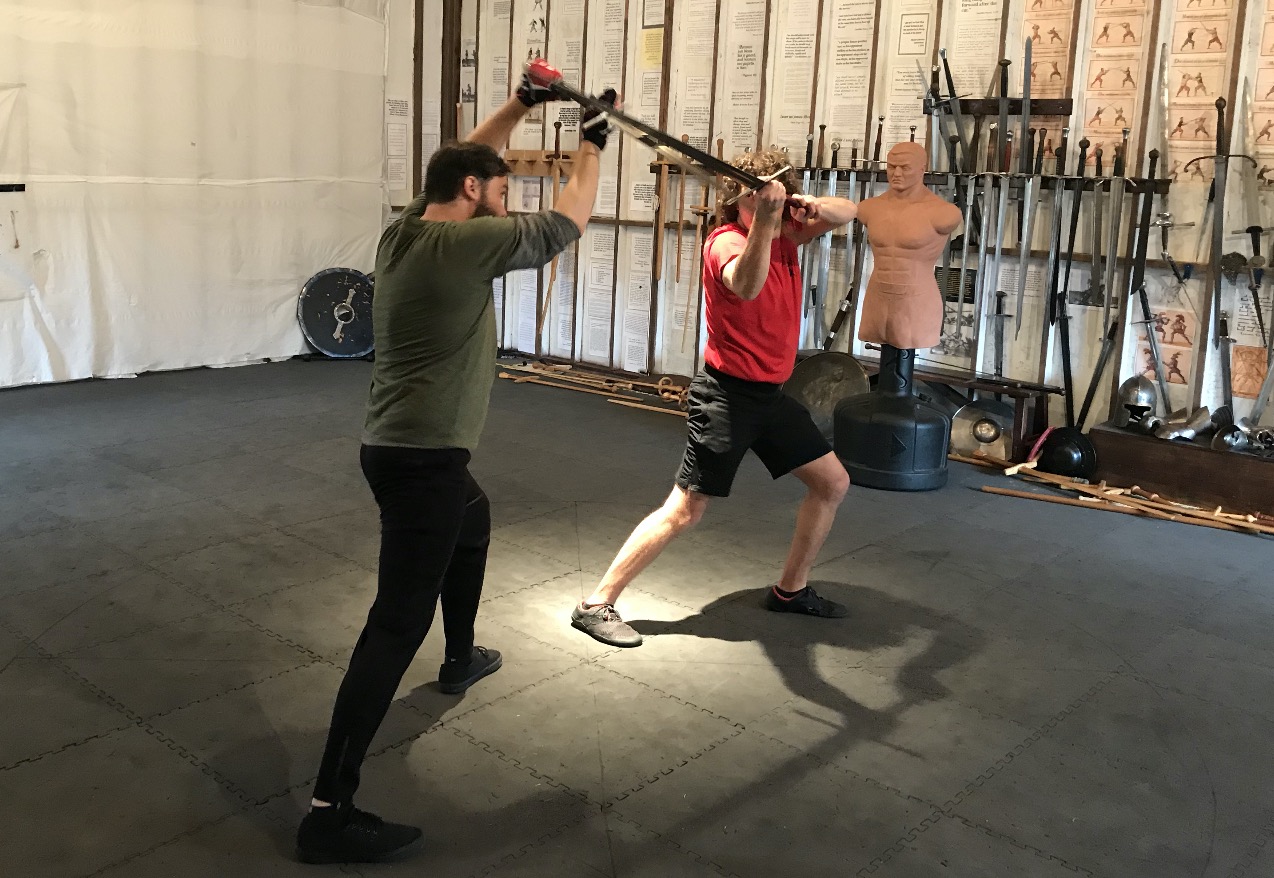 The opponent can’t keep attacking if he’s busy defending himself against
your strikes as you close in to bind and counter —exactly as
Liechtenauer tells us. Doing this takes practice. Doing this takes a
competent repertoire of the master-strikes. It takes audacity. Doing
this takes an attitude that you do not strike to his weapon but move in
to strike at the same time regardless of what he does. Instead, you step
and strike together as you reach out only with concern to timing your
follow-on blows with regard to contact pressure/leverage in the bind.
This is done in both offense or defense because either way the principle
and action is the same. Offense is defense as so many of the masters of
defence tell us The opponent can’t keep attacking if he’s busy defending himself against
your strikes as you close in to bind and counter —exactly as
Liechtenauer tells us. Doing this takes practice. Doing this takes a
competent repertoire of the master-strikes. It takes audacity. Doing
this takes an attitude that you do not strike to his weapon but move in
to strike at the same time regardless of what he does. Instead, you step
and strike together as you reach out only with concern to timing your
follow-on blows with regard to contact pressure/leverage in the bind.
This is done in both offense or defense because either way the principle
and action is the same. Offense is defense as so many of the masters of
defence tell usIt’s truly magnificent. And it is not hard to either display or to learn. You exploit any incidental contact that occurs from your foot all the way up to your hands. You obviously don’t do this too quickly, or from too far away. Most of all, you certainly don’t drag your feet or delay your step. When the opponent tries this on you, the solution is more of the same back at them. The answer is never to rigidly or statically try to “block” or hold your weapon out in the “common fashion and allow it to be struck upon.” That’s not the Art and, indeed, is suicidal. Stay in motion, don’t deliberately parry or be defensive. Instead, engage by closing-in to "find" his weapon. T 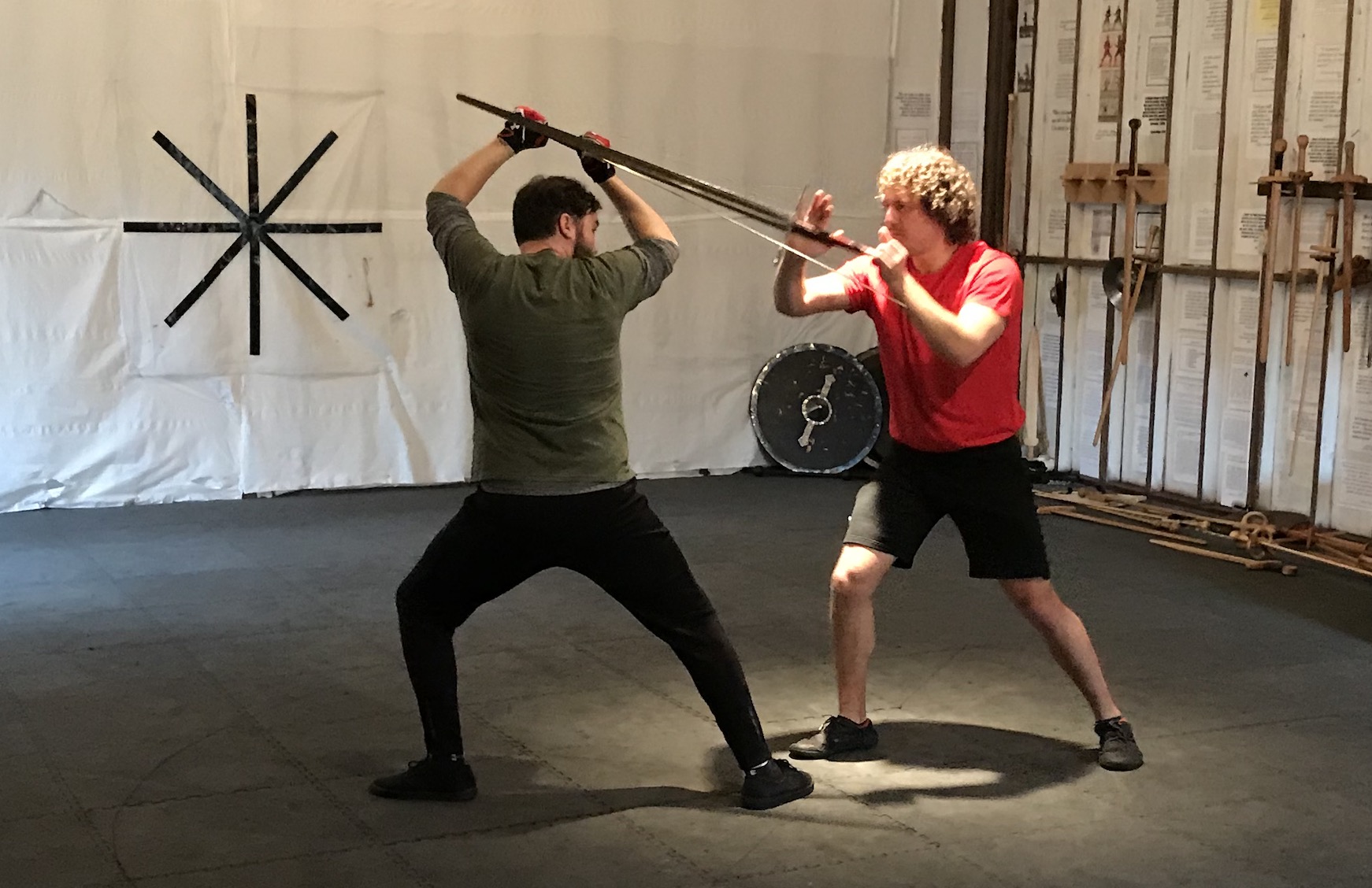 his idea that you can deliberately strike at an opponent to
deliberately play off of their defense in order to strike again and
again is certainly an audacious method. In this way, even if the
opponent is skilled in counter-striking, you, in effect, end up
“countering their counter”. This is nothing like either the methods of
simple stick-fighting and modern fencing nor the nonsense portrayed in
the stunt work of popular entertainment. It requires adept manipulation
of your weapon matched with a keen ability in closing to bind. It goes
beyond simple understanding that the opponent creates an opening by
their very reaction of trying to cover and ward against your attack. his idea that you can deliberately strike at an opponent to
deliberately play off of their defense in order to strike again and
again is certainly an audacious method. In this way, even if the
opponent is skilled in counter-striking, you, in effect, end up
“countering their counter”. This is nothing like either the methods of
simple stick-fighting and modern fencing nor the nonsense portrayed in
the stunt work of popular entertainment. It requires adept manipulation
of your weapon matched with a keen ability in closing to bind. It goes
beyond simple understanding that the opponent creates an opening by
their very reaction of trying to cover and ward against your attack.Throughout history, martial arts around the world understand the powerful connection between sensitivity to contact pressure and judgment of timing. Many source teachings of Renaissance Martial arts expressed this in one way or another —if you know where to look and can recognize it. 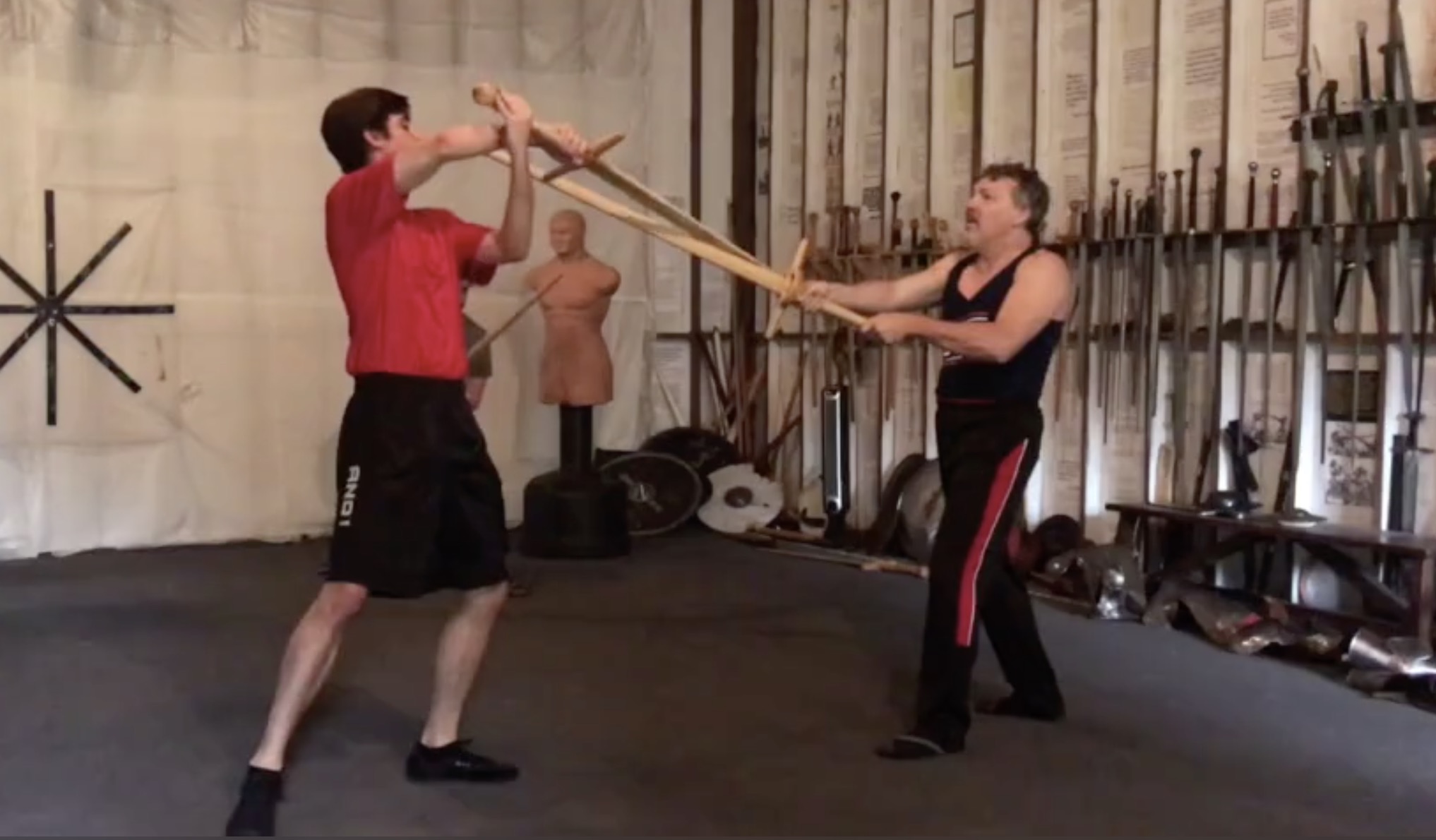 Among the best of these comes to us from the Flemish master, Girard
Thibault’s rapier work of 1630. Very much like Master Liechtenauer
centuries earlier, Thibault describes the familiar idea of attacking the
weaker portion of their blade with the stronger portion of yours so
that with a little effort you may control its actions while they are
forced to use violence motions that move it out of line. This is
possible only by "those who understand the value of sensing the
opponents blade” —as he attempts to explain in his chapters.
Thibault stresses "controlling" the opposing blade, writing: “when it is
in range, never to flee from it, and having once touched it, never to
quit. He says “in order to do this, it is necessary above all else to
understand the difference of weights [pressure]" and that “one must
always be sure that one holds the opposing sword in subjection."
Thibault taught that in working the angles of the blades “it is with
prudence, and with such observation of sentiment [feeling the
contact], that the adversary is not able to make the least mistake in
responding without suddenly being struck a mortal blow." On sentiment,
he declares, “it extends to all situations into which one comes through
the contact of blades, both far off and close up, for the attacker and
the defender" in whatever infinite possible actions and movements are
taken. Discerning the strong and weak of the opponent’s weapon is “the
proper object of sentiment”, he instructs, "For once we have contact
between the blades, we are able to make our approaches...with assurance,
since we are certain always to know in time the designs he intends to
use...". In other words, only when you make a bind on their rapier can
you safely get in close to stab them. Among the best of these comes to us from the Flemish master, Girard
Thibault’s rapier work of 1630. Very much like Master Liechtenauer
centuries earlier, Thibault describes the familiar idea of attacking the
weaker portion of their blade with the stronger portion of yours so
that with a little effort you may control its actions while they are
forced to use violence motions that move it out of line. This is
possible only by "those who understand the value of sensing the
opponents blade” —as he attempts to explain in his chapters.
Thibault stresses "controlling" the opposing blade, writing: “when it is
in range, never to flee from it, and having once touched it, never to
quit. He says “in order to do this, it is necessary above all else to
understand the difference of weights [pressure]" and that “one must
always be sure that one holds the opposing sword in subjection."
Thibault taught that in working the angles of the blades “it is with
prudence, and with such observation of sentiment [feeling the
contact], that the adversary is not able to make the least mistake in
responding without suddenly being struck a mortal blow." On sentiment,
he declares, “it extends to all situations into which one comes through
the contact of blades, both far off and close up, for the attacker and
the defender" in whatever infinite possible actions and movements are
taken. Discerning the strong and weak of the opponent’s weapon is “the
proper object of sentiment”, he instructs, "For once we have contact
between the blades, we are able to make our approaches...with assurance,
since we are certain always to know in time the designs he intends to
use...". In other words, only when you make a bind on their rapier can
you safely get in close to stab them.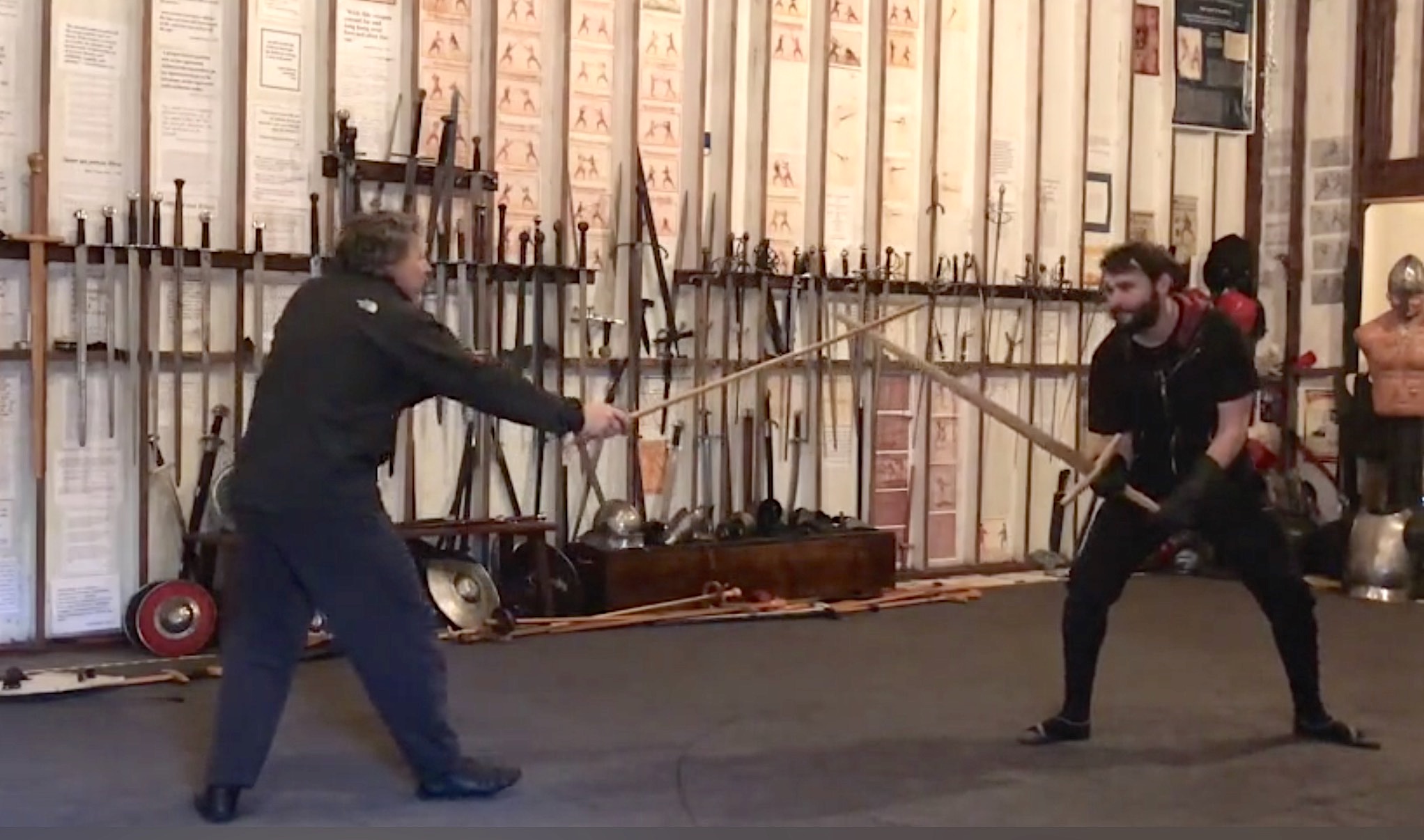 Master Thibault further explained that "sentiment" reveals the
beginnings from which all movement takes its direction and that once
this intention is known we may always prevent it from reaching its
effect: "for we come by means of sentiment into close to measure,
and being there, we force the opponent to defend himself with violent
motions, in such a way that he opens for us a path to a position, where
he will receive an inevitable attack." If there was any doubt that
sensing contact pressure and gauging leverage is critical in close
combat, Thibault declares: “all the advantage of this art consists in
assurance in making ones approaches. This cannot be done without a
complete knowledge of the importance of sentiment and sight"
[judgment of timing and distance] adding that “these are the two unique
foundations of the exercise of swordsmanship." Thibault even goes as
far to state: "Sight is used in order to come properly into presence, sentiment in order to do so more surely; by sight one comes to sentiment and by sentiment to the execution itself. Sight is necessary for all kinds of measures; but sentiment, as it cannot be put to work except through contact...at close range it guides us to counter opposing movements in time." Master Thibault further explained that "sentiment" reveals the
beginnings from which all movement takes its direction and that once
this intention is known we may always prevent it from reaching its
effect: "for we come by means of sentiment into close to measure,
and being there, we force the opponent to defend himself with violent
motions, in such a way that he opens for us a path to a position, where
he will receive an inevitable attack." If there was any doubt that
sensing contact pressure and gauging leverage is critical in close
combat, Thibault declares: “all the advantage of this art consists in
assurance in making ones approaches. This cannot be done without a
complete knowledge of the importance of sentiment and sight"
[judgment of timing and distance] adding that “these are the two unique
foundations of the exercise of swordsmanship." Thibault even goes as
far to state: "Sight is used in order to come properly into presence, sentiment in order to do so more surely; by sight one comes to sentiment and by sentiment to the execution itself. Sight is necessary for all kinds of measures; but sentiment, as it cannot be put to work except through contact...at close range it guides us to counter opposing movements in time." 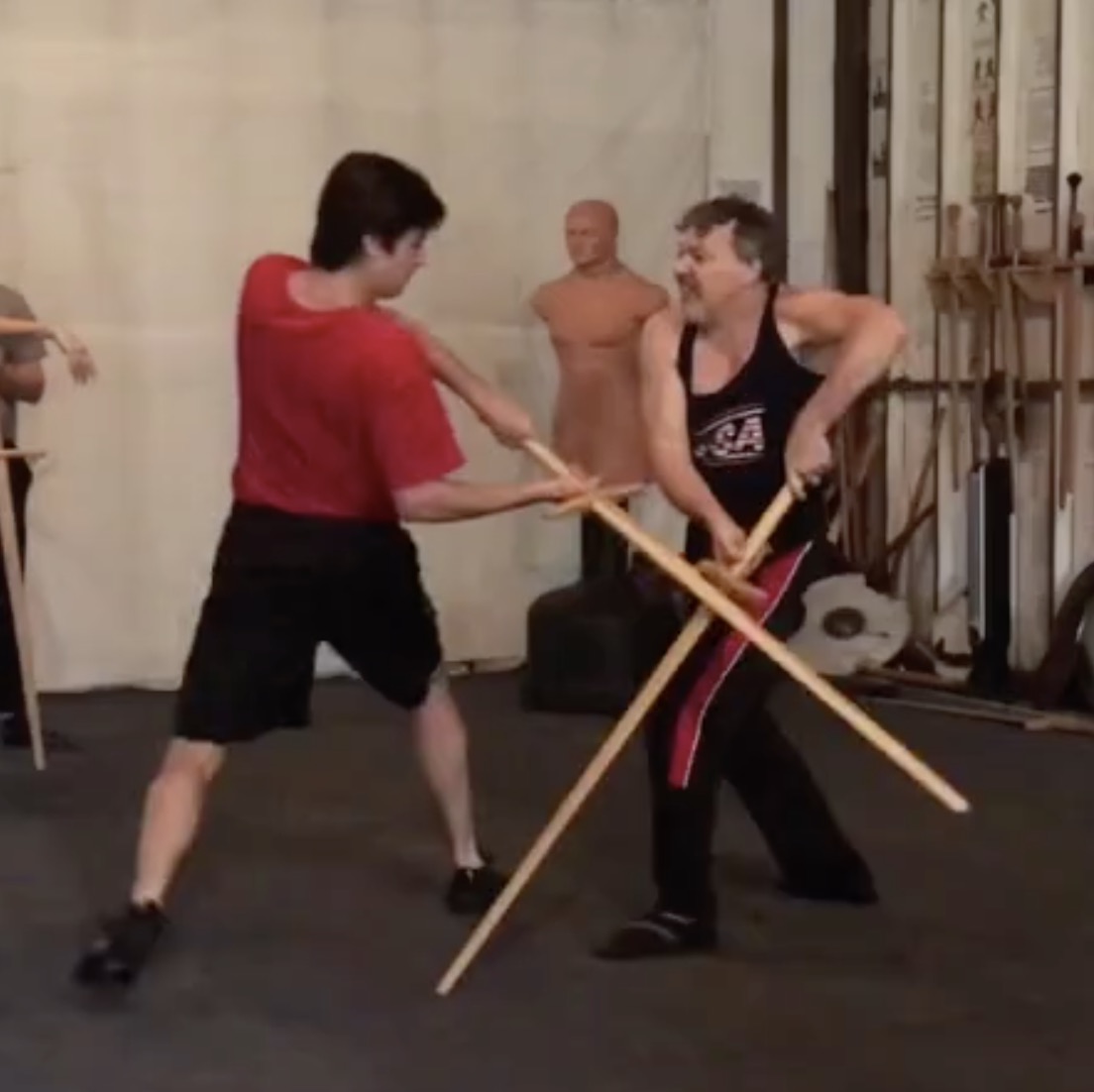 Curiously, Thibault notes that sentiment "is nonetheless held in little
esteem among masters of this profession.” When it comes to timing,
however, he stresses in his style that "seizing the time exactly...is
one of the most important points of the entire exercise, and without
which none of it can be practice with grace or assurance.” On timing,
Thibault states that it is “sudden and difficult in the exercise of
arms, where it...often presents itself for nothing but a simple instant, which is a point of time that is indivisible and of no duration at all." On this matter he brilliantly concludes, "Thus there is a time in which one find the occasion, but very few occasions in which one finds the time.” Curiously, Thibault notes that sentiment "is nonetheless held in little
esteem among masters of this profession.” When it comes to timing,
however, he stresses in his style that "seizing the time exactly...is
one of the most important points of the entire exercise, and without
which none of it can be practice with grace or assurance.” On timing,
Thibault states that it is “sudden and difficult in the exercise of
arms, where it...often presents itself for nothing but a simple instant, which is a point of time that is indivisible and of no duration at all." On this matter he brilliantly concludes, "Thus there is a time in which one find the occasion, but very few occasions in which one finds the time.”It might be asked, where is the principle of distance or measure in all of this? The answer is awareness of range is inherent in Master Liechtenauer’s “five words” that make up the whole Art. One cannot feel the strong and weak until moving into contact and one cannot then either act before or after nor in the instant without first coming into range. Thus, judgement or measure of whether the opponent is in distance to hit or be hit is intrinsic to all of this. Just as timing and leverage are linked so are timing and distance. None of this is difficult —if you train correctly, audaciously, diligently, as a martial art not sport. First, learn to strike with good force and motion by floryshing and pelling —judging distance in the process. From this, learn through drills to bind and wind in-close while feeling all contacts. From that, learn to defend by countering oncoming attacks in proper time. Finally, because you know all this, you are then able to safely strike and strike again even as the opponent tries to defend with their own strikes and counters. The rest is really all fitness and fighting spirit. 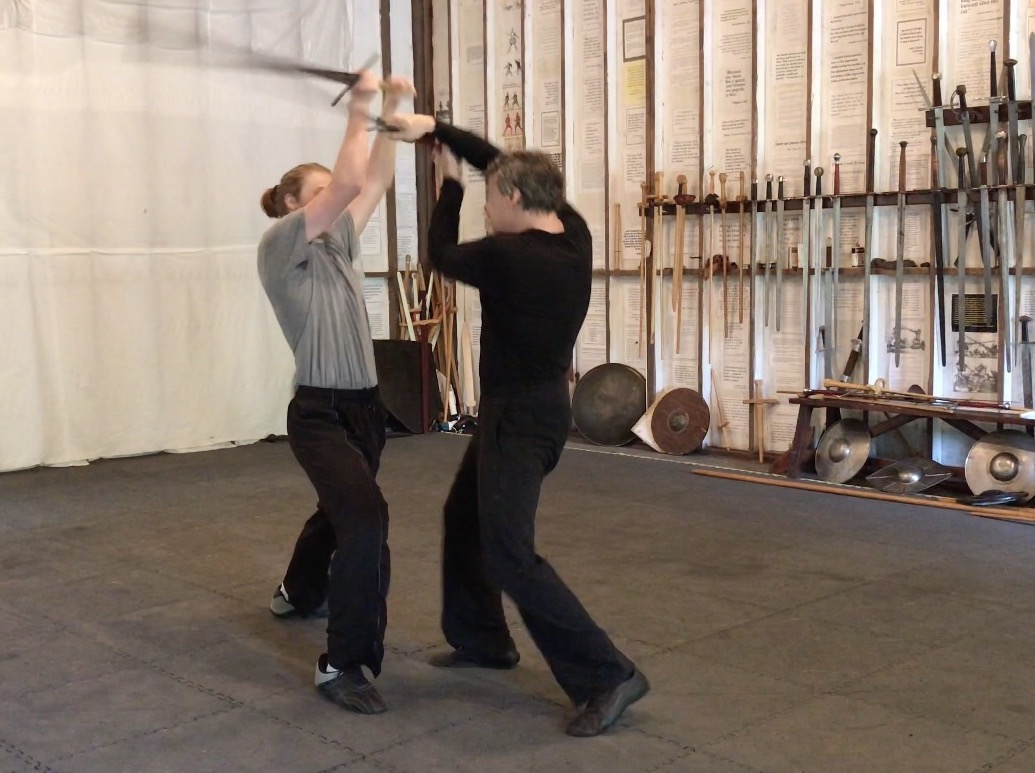 I have long made this focus on binding the centerpiece of my training
program’s curricula and can attest to its value and its power with every
weapon — whether in armor or unarmored — and especially in grappling or
wrestling. The connection between sensing contact leverage with
perception of timing and distance is central to prowess in executing
masterful techniques. For many years, I have compiled evidence to argue
that, in fact, this is the very meaning behind George Silver’s concept
of gaining or winning "the Place." Because of the very odd way Silver
chose to word his explanation of Place, it’s a difficult concept to
process. But it’s such an intuitively self-evident matter: When you are
close enough to have achieved the leverage advantage in crossing
weapons, then, by its nature, you can hit right there with out need to
get in any closer. This is clear enough in his telling us that in
winning the "true place whereby you shall safely defend yourself and
endanger him." I have long made this focus on binding the centerpiece of my training
program’s curricula and can attest to its value and its power with every
weapon — whether in armor or unarmored — and especially in grappling or
wrestling. The connection between sensing contact leverage with
perception of timing and distance is central to prowess in executing
masterful techniques. For many years, I have compiled evidence to argue
that, in fact, this is the very meaning behind George Silver’s concept
of gaining or winning "the Place." Because of the very odd way Silver
chose to word his explanation of Place, it’s a difficult concept to
process. But it’s such an intuitively self-evident matter: When you are
close enough to have achieved the leverage advantage in crossing
weapons, then, by its nature, you can hit right there with out need to
get in any closer. This is clear enough in his telling us that in
winning the "true place whereby you shall safely defend yourself and
endanger him."In the words of George Silver: "Then thus do I conclude, that if there is perfection in the Science of Defence...whosoever wins or gains the place in true pace, space and time, has the advantage, whether he is striker, thruster or warder. And that is my resolution.” The whole idea is to come into contact in order to sense the moment. You have to feel when to act. “Therefore, those who know how to observe the
right Time, or the Tempo (as we call it) are the most blessed. Because
this is the mark of our Art, and requires great speed, and is the
hardest and most subtle, though the Feeling, which in our Art is also
subtle, has great similarity with Tempo.” – Bruchius, 1671
5-2019 |
|
|
|||
|
|
|||
|
|||